Posted 26 January 2022.
I grew up on Florida’s east coast (Daytona Beach) in the 50’s and 60’s. We could watch the launces from our front yard, and once my dad and I travelled the 100 miles or so south to Cape Canaveral to witness one of the Apollo launches. Back in those days folks just parked alongside the roads and watched. I vividly remember watching the launch, and many seconds later actually feeling the sound vibrate through my chest – what an experience! Later, working as an engineer for the government, I watched the Challenger disaster from a Florida highway overpass. Since then I have watched NASA become a cringing shadow of itself and the U.S. become a nation without the capacity to launch humans into space. It took Elon Musk and Space X to show the world how to make space accessible again, and show us an even bigger dream – Starship and Mars.
I have been following developments at Boca Chica, Texas since shortly after StarHopper made it’s famous 500′ flight in August of 2019, and have watched through the eyes of Boca Chica Mary and all the other NSF crew as the launch site grew from nothing but a single concrete landing pad to the state it is in today, with sub-orbital and orbital flights visible on the horizon. Regardless of whatever else happens or where it happens, Boca Chica Texas will be forever known as the place where human interplanetary travel got its start.
I have wanted for some time now to see this magical place with my own eyes, and this week my wife and I finally got to do our Starbase pilgrimage. We flew from Columbus, OH to Harlingen, Tx on Southwest. We stayed overnight in Brownsville, and then made the drive out to Starbase this morning. All the pictures, videos, and commentary can’t do justice to the real thing. In this post I hope to add my ‘pilgrim’s point of view’ in the hope that others will be encouraged to do their own pilgrimage.
In preparation for the trip, I had been asking about Starbase do’s and don’ts since last November, but I hadn’t gotten much in the way of useful information. NSF Discord member xredbaron62x was the most helpful, passing along links to some other threads talking about Boca Chica trips, but the information itself wasn’t very useful. In particular, most posters mentioned that South Padre Island (SPI) was the best place to stay, but that option doubles the round-trip distance to the launch site. You have to go from SPI to Brownsville, and then Brownsville to BC. I couldn’t see the logic for this unless there was a specific reason, like a known launch date, so we booked a hotel in B’ville.
We arrived late Tuesday night, and sacked out at the hotel. The next morning we got up, had breakfast there, and headed out about 9 am. There were closures scheduled for both the days we were going to be there, but I had checked the night before and the Wednesday one had already been cancelled, so we didn’t have to worry about the 10am closure. As it turned out, leaving B’ville at 9am meant we were ‘off-shift-change’ and traffic along Hwy 4 was almost non-existent. As we drove south on a beautiful sunny day, I happened to notice what appeared to be brand-new high-voltage utility poles alongside the road (I’m an Electrical Engineer – we tend to notice these things).
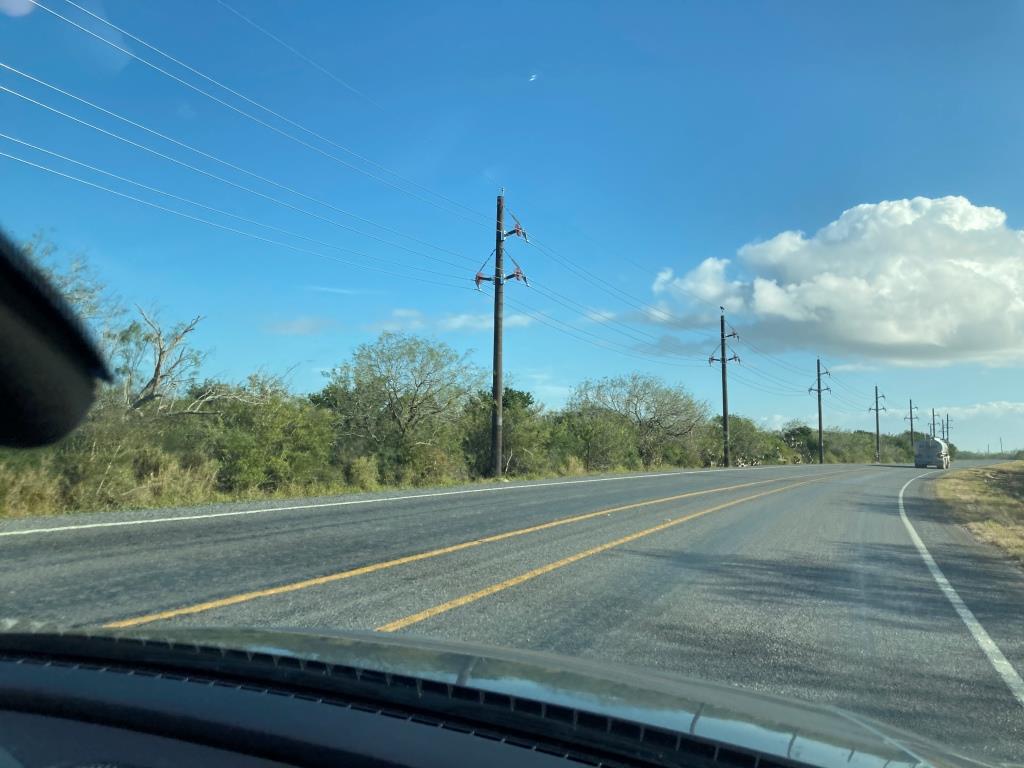
With my background as an EE I could tell these poles were carrying some serious high voltage and high current, based on the number of conductors per insulator position, and the spacing between the insulators. Since there’s nothing on this road except Space X’s production and launch facilities, I jumped directly to the conclusion that these lines were intended to upgrade power at the Space X sites. As we travelled south, we could see that these power lines were just being installed, as we started passing construction crews and very large conductor rolls.

Further on, we saw an odd roadside sign, complete with a yellow smiley-face. This is the entrance to the shooting range we’ve all heard about in conjunction with Starbase.
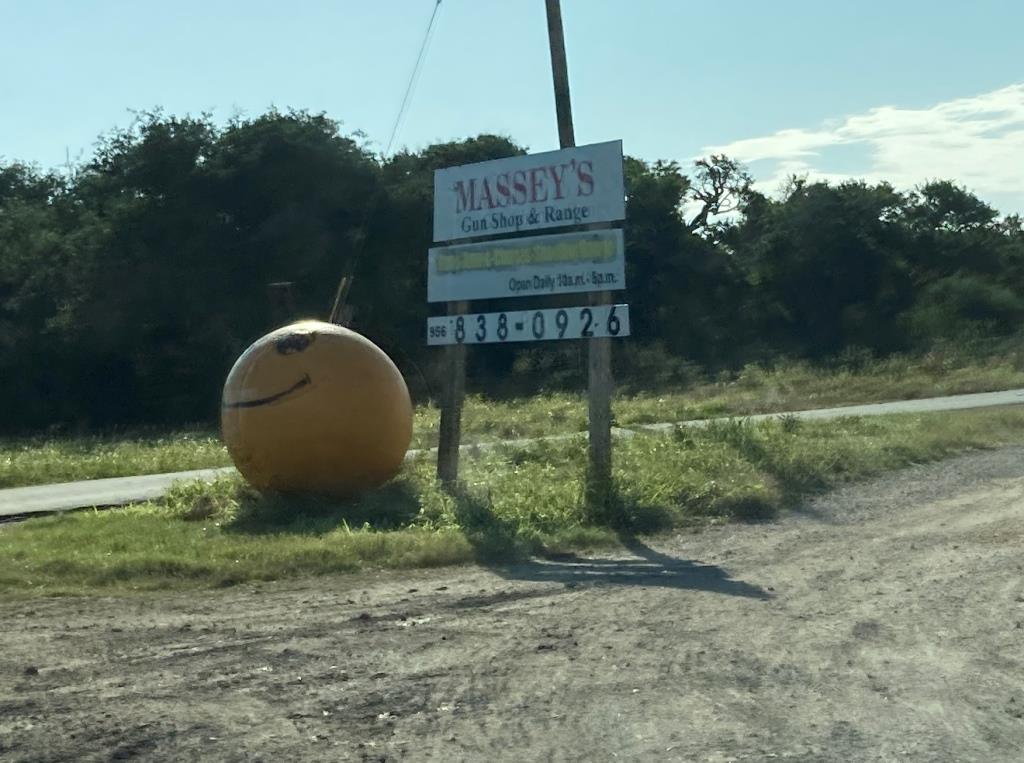
Sometime after that, I started to see the instantly recognizable skyline of the production site, and very faintly beyond that, the launch site itself. I like this photo because it gives the viewer some idea of the isolation of this place; there’s nothing around except miles and miles of miles and miles.
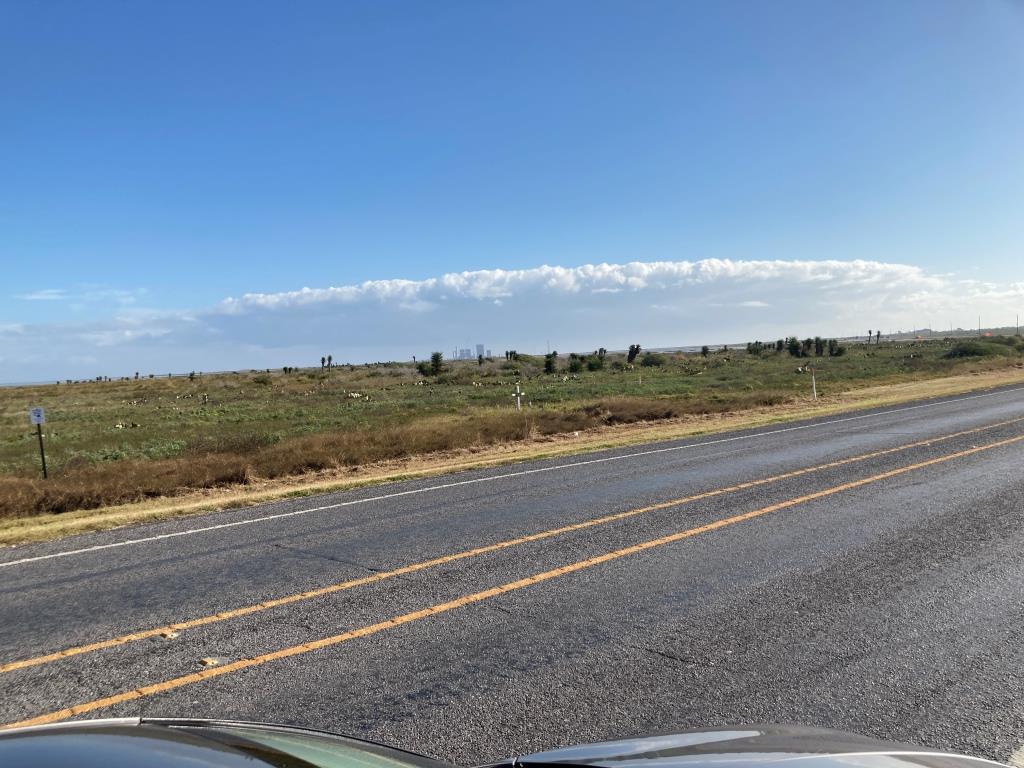
Here’s a short video to emphasize the ‘miles and miles of miles and miles’
We stopped a little later on so I could take some additional photos, and I happened to notice a roadside historical memorial to ‘Camp Belknap’ where 7,000-8,000 volunteers to fight in the 1840’s war with Mexico were housed in terrible conditions over a Texas summer. Looking out over the terrain, I can’t imagine anyone lasting for long in such desolation, much less 7,000 – 8,000 soldiers. Then I noticed that the site is well-kept, with red, white, and blue flowers on one side, and an American flag on the other – maybe there’s still hope for our country after all!
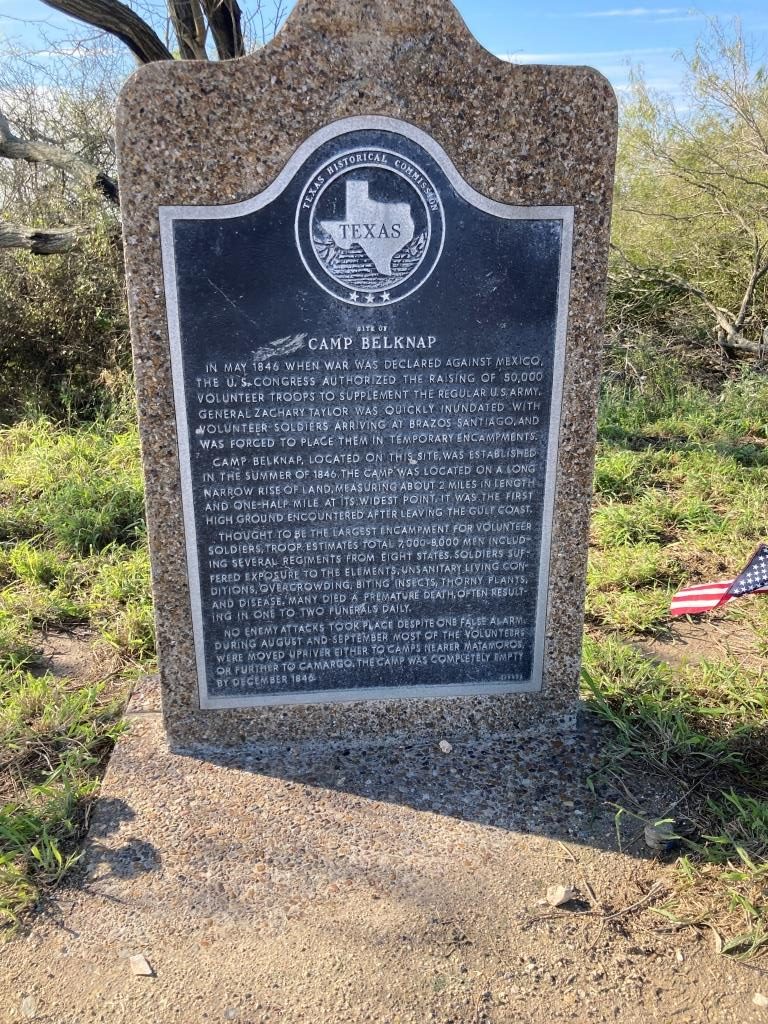
As we got closer to the production site, details – like SN16 and SN15 and (Booster 3??) became visible
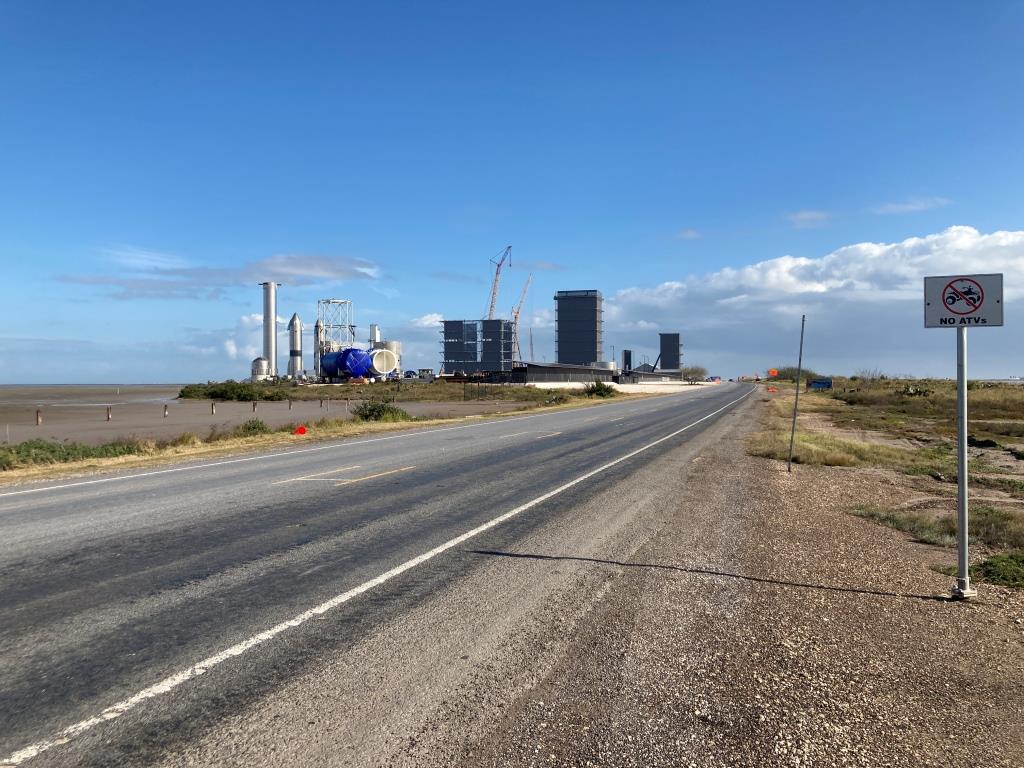
Here’s a short video taken as we passed the iconic ‘S T A R B A S E’ sign
We drove on past the production site, me catching just a glimpse of a woman with a big camera (BC Mary?). Between the production site and the launch site, we came to this – a big stop-sign in a road construction area.
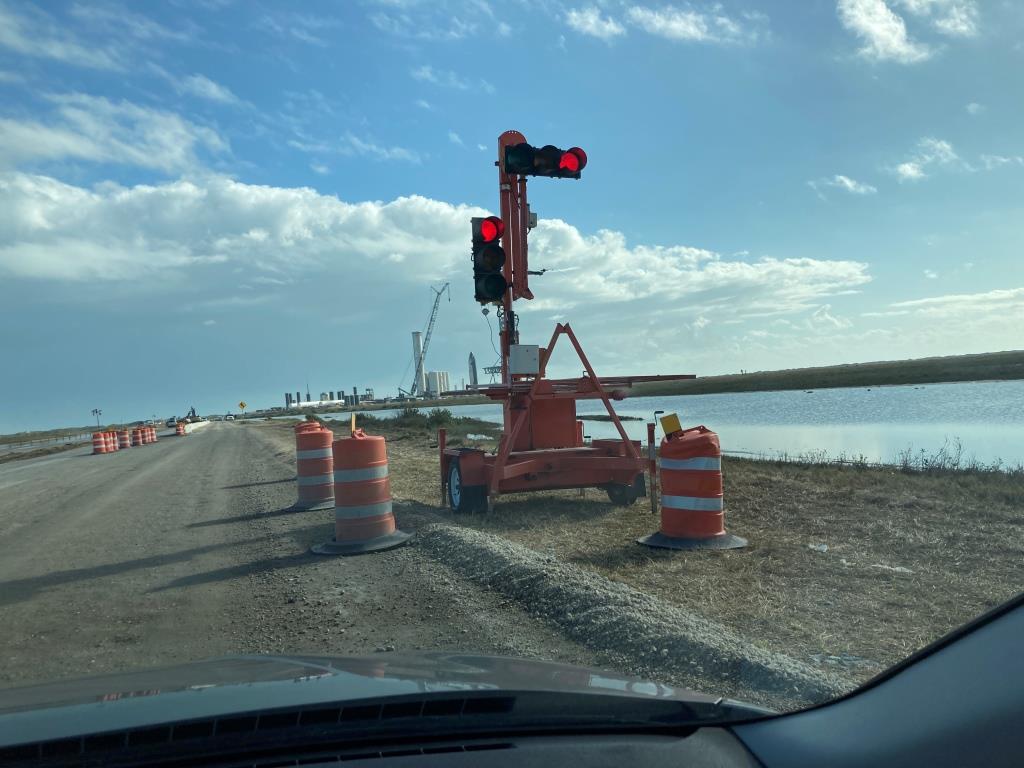
The next mile or so between the production and launch sites was all torn up; I think they have been working on this section of the road forever.
And here we are at the launch site, watched over by the one and only Starhopper
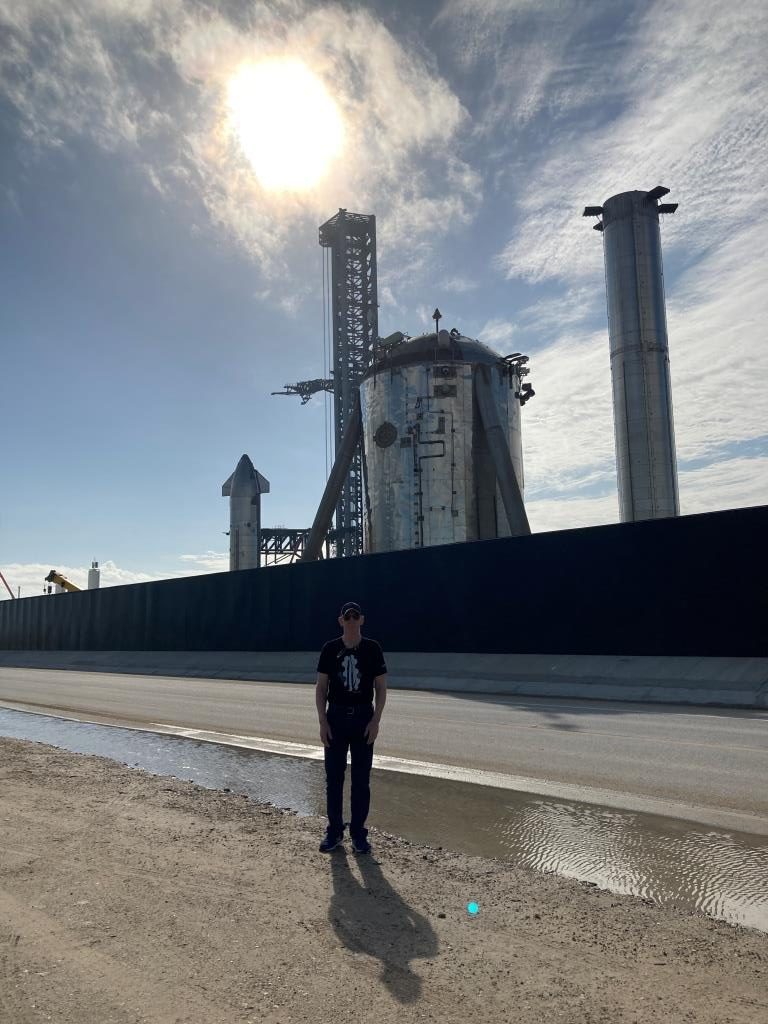
As we wandered along the road-edge on the far side of the road, I noticed that there wasn’t much going on, and thought I might be able to get a ‘I was here’ photo from near the security booth. So, I trotted over to the security booth and asked the guard if it would be OK. He said “Sure – see that line in the pavement (pointing to a faint line that, apparently marked the near edge of the public road)? – just as long as you are on the other side of that line you are OK”. Cool! So I stepped forward about 1 foot and my wife took this shot – Yay!
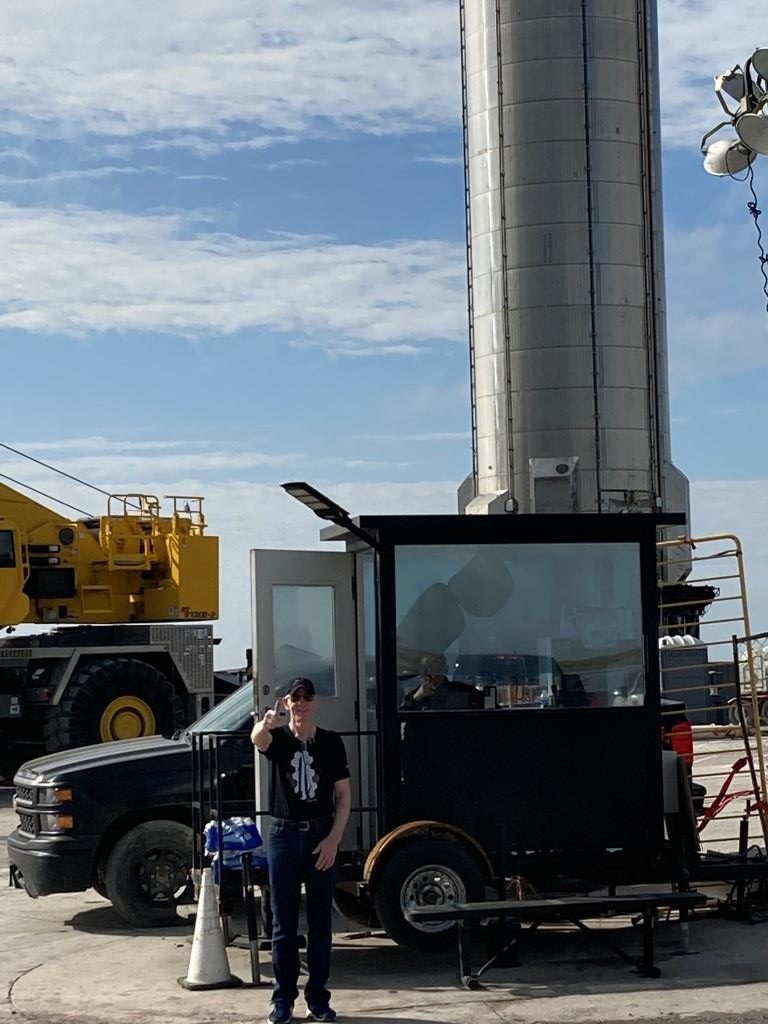
Next we went down to the beach, as I wanted to see if I could find one of the many robot cameras we all have been watching.
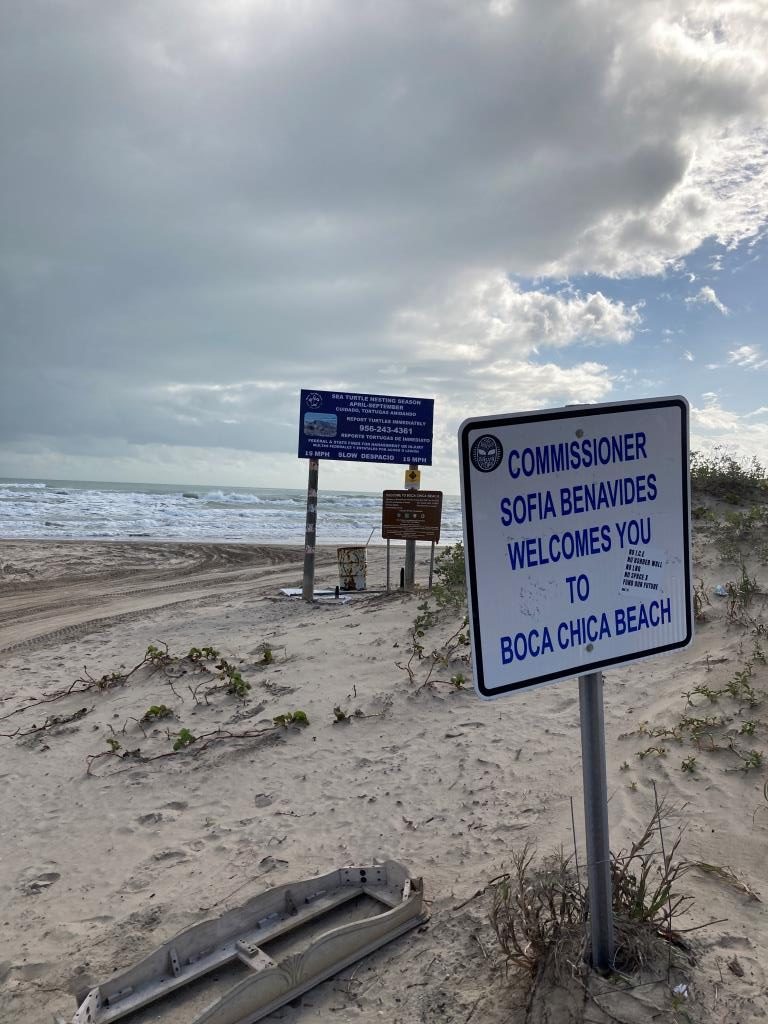
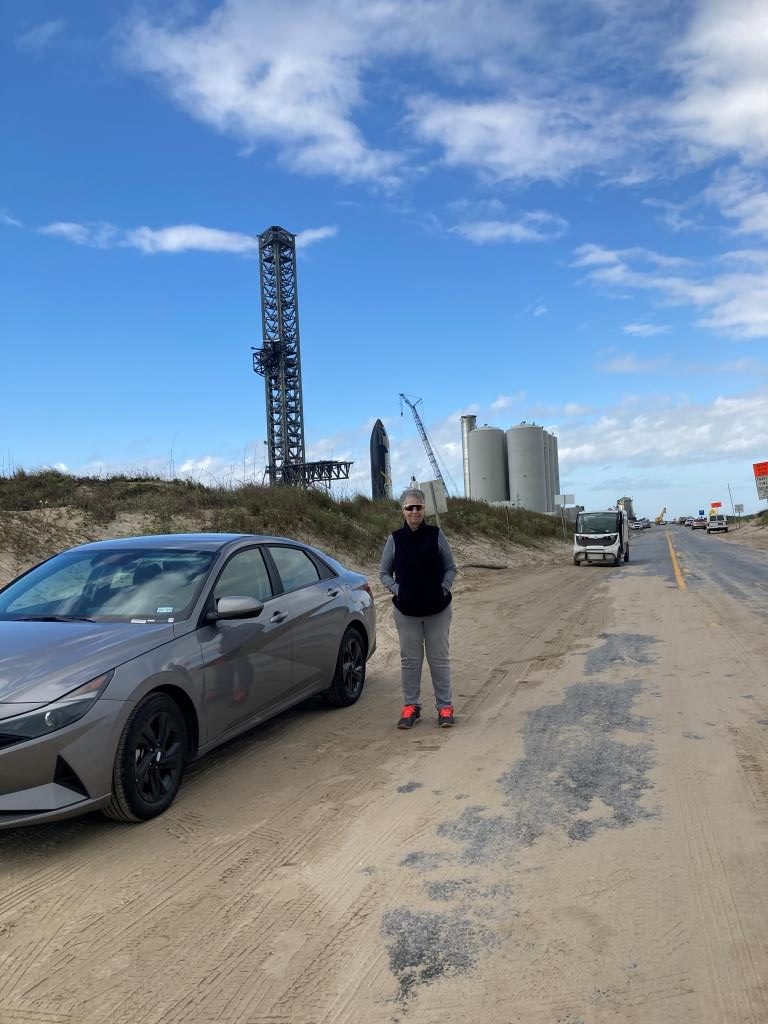
I didn’t find any NSF cameras, but I did find a guy with a huge cameral linked to a Starlink terminal. He said he was with a German outfit that was doing regular narrated Starbase updates (I forgot the name of the app), and he pointed further down the beach where he said some Lab Padre guys were set up. By this time the offshore rain clouds had gotten a lot closer, so we beat feet back to the car.
On our way back to the hotel, we ran across this sign, which we thought summed up our hopes and wishes for Starbase
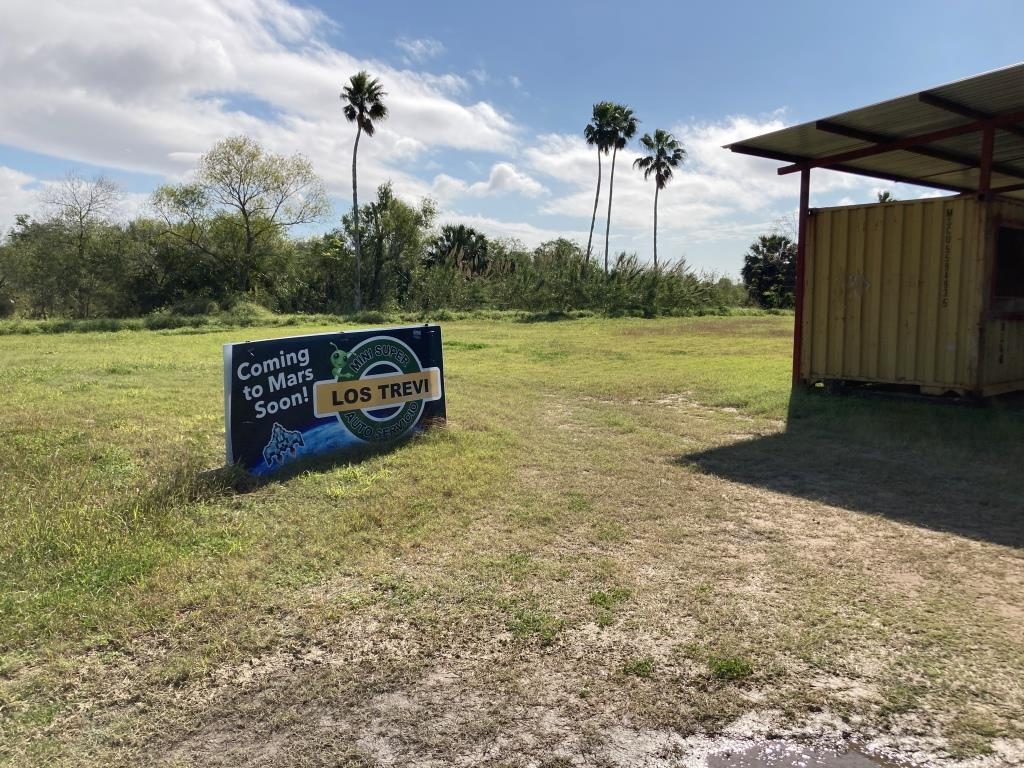
Stay tuned
Frank
Great pictures! Looks like you had a good time.
Yes, it was an almost literally fantastic (in the sense of “Science Fiction brought to life” experience. You could put that panorama on the cover of any ‘Analog’ magazine and it would look right at home. We are all (finally!) living in the space age version of post-Wright Brothers aviation, where aircraft went from laughable death-traps to ubiquitous transportation commodities in less than one human generation (in fact, my mother, born in 1908, saw her first airplane as a young woman, and the first moon landing as a great-grandmother). What a time to be alive! 😉